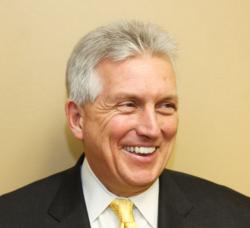Day: January 13, 2017
2017 Trends That Could Influence your Philanthropy (Part 2)
In this continuing series, we discuss trend information that could influence the philanthropic revenue your non-profit organization or church receives. In last week’s blog we discussed political differences becoming more polarizing and technology being used more effectively. Today we bring you two more trends.
Unemployment Rates Affecting Giving
Unemployment and under-employment has greatly influenced philanthropy. According to a recent study by the Institute for Policy Studies, charitable giving from donors with incomes of less than $100,000 declined by an alarming 34% last year.
According to the Bureau of Labor Statistics, the US unemployment rate hovers at around 4.7 %. While that would normally be cause for celebration, according to a CNN report, there are some hidden facts. First, only 62.7% of adult Americans are actually working. The labor participation rate hasn’t been that low in some 40 years. Also, the average wage of the typical worker has remained flat for over 20 years.
According to a Gallup article, widely reported unemployment metrics in the U.S. don’t represent real joblessness. For example, Gallup calls a “ good job” one in which the worker is employed for at least 30 or more hours and receives a regular paycheck. According to these criteria, the unemployment rate is closer to 10%.
It’s not surprising then that the number of donors at lower income levels is declining. However, recently the prospects for job growth have improved, particularly with promised tax cuts. As fundraising consultants, our advice is to work even harder to recruit donors at all levels, and over the next few years your efforts will be rewarded. Clearly, we are likely to see increased participation from lower income donors.
Simultaneously, giving from top income donors ($500,000 or more) increased by 57% and giving from the super rich ($10 million or more) increased by 104%. While this is encouraging, there is an inherent danger here. When nonprofits depend on too few donors to meet their budgets, they must ask what happens if one or two of these donors stop giving. Will the non-profit find itself in peril? That’s why having a broad donor base is essential.
Mistrust of Nonprofits is on the Rise
Less institutional trust and increased millennial involvement will bring demand for more projects demonstrating tangible results. A recent article in the Stanford Social Innovation Review started with the following statement: “Unethical behavior remains a persistent problem in nonprofits.” The authors used EduCap Inc. as an example. Evidently the organization abused its tax-exempt status by charging excessive interest on loans and providing millions in compensation and perks for the CEO and her husband. This included using the $31 million corporate jet for travel for family and friends.
There are many more examples of abuses that cause mistrust about fundraising, but suffice it to say that mistrust for nonprofits is on the rise. In fact, the article cites a Brookings Institute study that found 33% of participants reported “not having much” or “no” confidence in nonprofits, and 70% of participants believe nonprofits waste money. Also, according to a recent Forbes study, 78% of millennials said they would likely stop donating if they didn’t know how their donation is making a difference.
Organizational Transparency Increases Trust
Taking into consideration the erosion of trust and millennials’ preferences, nonprofit organizations can no longer assume that they will automatically be trusted. Instead they’ll need to earn that trust by incorporating high levels of transparency in their operations and communicating that transparency in multiple ways. In addition, they will need to demonstrate with increasing frequency, how donations to fundraising campaigns make a difference in the lives of the people they were intended to help.

